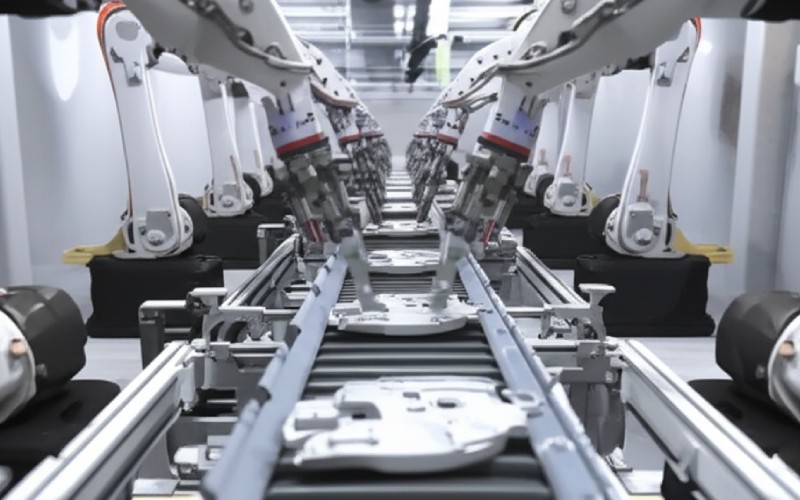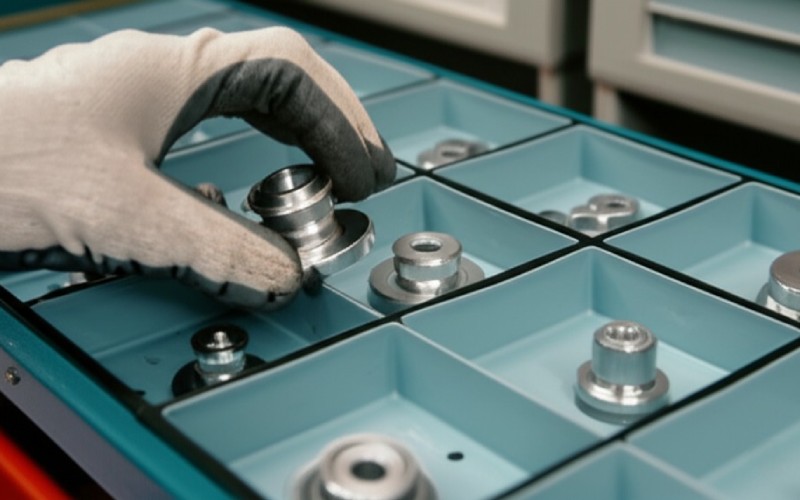Let Sino's Lamination Stacks Empower Your Project!
To speed up your project, you can label Lamination Stacks with details such as tolerance, material, surface finish, whether or not oxidized insulation is required, quantity, and more.

This article will discuss something that may appear a bit technical, yet it’s actually essential if you collaborate with makers: NEMA and IEC standards for the electrical motor. You could have listened to these terms, NEMA and IEC, thrown around. These resemble the rulebooks for how an electric motor must be made and exactly how it must function.
Why should you keep reading? Well, if you’ve ever needed to select a new electrical motor, or asked yourself why some motors look different or have various tags, this is for you. Understanding about NEMA and IEC standards can assist you select the best motor for your job. It can save you money on power costs because you’ll recognize efficiency much better. And it can see to it that your equipment runs securely and for a long period of time.
Allow’s start with the fundamentals. You could see “NEMA” on some tools. NEMA stands for the National Electrical Manufacturers Association. Consider them as a group in North America, mainly the U.S., Canada, and Mexico, that produces policies for exactly how electric devices need to be made. They established requirements to ensure points are risk-free and work well with each other. The National Electrical Manufacturers group plays a large function right here.
After that there’s IEC. IEC suggests the International Electrotechnical Commission. This group is worldwide. They make regulations and motor requirements that are used in numerous, numerous nations around the globe. Their objective is additionally safety and security and making sure electric things are compatible, no matter where they are made.
Both NEMA and IEC develop these important regulations, these standards for electrical items, consisting of electric motors. This standardization is incredibly useful. It means if you purchase a motor that follows a certain requirement, you know what to anticipate. It helps electric tools producers make products that can work together. This helps everyone.
You could be believing, “Okay, teams make policies. So what?” Well, allow me to inform you, these motor requirements are a huge offer for any individual that makes use of or acquires electric motors. First of all, they said keep things risk-free. A motor constructed to a good requirement is much less likely to cause issues. They also inform you a whole lot about the motor’s performance characteristics.
A lot more significantly, comprehending NEMA and IEC helps you select the right motor. If you pick a motor that’s a great fit, it will likely have far better efficiency. And much better effectiveness indicates it utilizes much less electrical energy. Selecting the best motor based upon these requirements can save a business a great deal of money on power expenses in time. It also indicates the motor will likely last longer and do its task much better.
So, we have these two requirements: NEMA and IEC. What’s the NEMA vs. IEC tale? There are some real differences between NEMA and IEC. Consider it similar to this: NEMA motors, which often follow NEMA criteria, are typically developed to be extremely challenging. They are usually physically larger for the same power outcome compared to an IEC motor. They additionally have a tendency to have a higher service factor, which we’ll talk even more commentators. You’ll find a NEMA motor is extremely common if you’re dealing with tools utilized in The United States and Canada.
On the other hand, an IEC motor is typically designed to be extra small. The IEC typically utilizes metric measurements (e.g., millimeters) for its dimensions. Due to the fact that the IEC convention is utilized worldwide, these motors are created for an international market. So, NEMA and IEC standards have various methods of thinking of exactly how a NEMA and IEC motor need to be developed and exactly how it ought to be carried out. It’s not that it is always better, they’re simply different.

Let’s focus on NEMA criteria. What do they do for you? Well, NEMA gives very clear regulations. For a NEMA motor, you’ll find certain horse power rankings. The voltage levels are additionally clearly defined. NEMA additionally has standard NEMA framework dimensions. These framework size numbers inform you of the motor’s physical dimensions, and they are usually in inches. This is wonderful because if you require to replace a NEMA motor, finding one with the exact same NEMA frame makes the work much easier.
NEMA styles are often really solid. This makes them good for laborious, like starting torque motors that require a lot of power to start. NEMA requirements likewise offer you details about the motor’s enclosure. The enclosure is the motor’s external shell, and it shields the within components from things like dust and water. This degree of security is really crucial for ensuring the motor lasts a very long time, particularly in unclean or damp locations.
Currently, what concerns the typical IEC and the IEC motor? An IEC motor is normally ranked in kilowatts, or kW, rather than horsepower like NEMA electric motors. All their physical measurements, like the motor frame, remain in metric systems (millimeters). They use IEC frameworks for their sizing. The IEC convention additionally uses various courses for motors. These classes tell you about just how the motor does and what it’s finest fit for.
A very important IEC basic for motors is IEC 60034-30-1. This one is all about efficiency classes. We’ll talk a lot more commentators, but this commonly helps you know exactly how energy-efficient an IEC motor is. IEC layouts are commonly concentrated on being an excellent suitable for various usages around the world. Because IEC electric motors are typically made for an international market, they typically focus on being small and suitable for global systems. IEC makes use of these specified courses to aid everybody understand motor capacities.
The motor frame is an actually large offering. It’s generally the body of the motor. The frame size tells you the motor’s major physical dimensions. This consists of where the placing openings are and how huge it is overall. Why does this issue matter a lot? Well, if you are required to change a motor, you desire the brand-new one to fit in the exact same area, right? A common structure size makes this much easier.
Currently, here’s an essential distinction between NEMA and IEC. NEMA frame dimensions are given in inches. However IEC frameworks make use of statistics dimensions, like millimeters. So, a NEMA motor and an IEC motor that have about the exact same power might not have the very same measurements and installing factors in any way. You can’t just swap them out. Understanding about these differences in NEMA structure and IEC structures can save you a great deal of trouble and make sure your replacement motor fits flawlessly.
Allow’s discuss efficiency. This is a very vital word when you’re Tanjung with any kind of electrical motor. Efficiency informs you how well the motor turns electrical power right into real work, like turning a fan or a pump. A motor with high efficiency wastes less electricity as heat. And that indicates it conserves energy and cash! Both NEMA and IEC have means to determine and classify motor performance. This assists you compare various electric motors and comprehend their effectiveness levels.
NEMA has actually something called the NEMA Premium® efficiency program. This is a component of NEMA’s Premium efficiency motor program. Motors that meet this NEMA Costs criterion are excellent at conserving power. The NEMA motor performances under this program are several of the best. For IEC, the standard IEC 60034-30-1 defines various effectiveness classes. You’ll see labels like IE1 (which is standard performance), IE2 (high effectiveness), IE3 (premium efficiency), and IE4 (super premium efficiency).
You’ll typically find that IE3 is mainly equal to NEMA Premium. And IE2 amounts to reliable levels that were common before. These degrees defined as “energy reliable” were a huge step up. The difference is that NEMA electric motors commonly include a higher service factor, which we’ll reach. But when you see cost efficiency tags like NEMA Costs or IE3, you understand you’re taking a look at a motor developed to conserve power. Power effective and IE3 are great targets. These criteria enable you to quickly compare performance scores. For brand-new jobs, aiming for reliability and IE3 is mainly the way to go.
Two various other terms you’ll listen to are duty cycle and service factor. What do they suggest? The duty cycle tells you if a motor is created to run constantly without stopping (that’s called continuous duty cycle) or if it’s suggested to run only for short periods and then rest (intermittent duty cycle). Choosing a motor with the best duty cycle is very important. If you make use of a periodic responsibility motor continuously, it can overheat and break down.
Now, the service factor is something you’ll see more often with a NEMA motor. A service factor of, say, 1.15 means the NEMA motor can handle a 15% overload above its rated power momentarily without damage. This can be really convenient if your motor lots often go a little bit over what the motor is rated for at full load. A lot of IEC motor layouts have a service factor of 1.0. This indicates they are not made to deal with overloads. So, you are required to be mindful about the expected load.
NEMA items and IEC tools are usually not guide drop-in replacements. Why not? Well, as we have actually spoken about, they have various frame size systems (inches for NEMA, statistics for IEC). They can likewise have various voltage scores and various performance characteristics.
Some electrical devices producers are currently making what they call “international” motors. These electric motors attempt to fulfill some requirements of both NEMA and IEC standards. But despite having these, you need to check every single information extremely thoroughly. It’s not practically the physical dimension of the NEMA and IEC motor; it has to do with the entire arrangement. The electric motors used will certainly frequently depend on the area. For example, motors utilized in The United States and Canada are very typically NEMA-based, while IEC and NEMA see different fostering prices globally.

The “far better” typically really relies on what you require your electrical motor to do and where you’re going to use it. NEMA motors are made to be really difficult and usually have that higher service factor. NEMA motors frequently are seen as the workhorses in numerous North American industries.
IEC motors are generally made with global markets in mind, so IEC styles frequently focus on being extra portable and often can be a little bit more economical upfront. When you’re picking, consider the operating temperature level, the sort of enclosure you require for access protection (maintaining dust and water out), and the voltage you have available. The major goal is always selecting the finest motor and the right motor for your specific task. It’s about making sure that electric motors satisfy your requirements. Companies in North America might lean in the direction of NEMA because that’s what they’re used to, but IEC is ending up being much more typical everywhere. Comprehending the NEMA and IEC standards aids everyone from makers who are part of NEMA’s Premium efficiency motor program to the people making use of these sophisticated motor modern technologies.
A: Usually, no, not straight. They have different physical dimensions (framework size in inches for NEMA, metric for IEC), installing openings, and typically different electric specs like voltage and service factor. You ‘d likely need to make adjustments to the machine or find an adapter, and carefully inspect all the electrical details.
A: They are extremely close! Both NEMA Costs (which is a component of NEMA’s Premium efficiency motor program) and the IEC basic IE3 course stand for high efficiency levels. IE3 is mostly equal to NEMA Premium in regards to pure effectiveness scores. The main distinction is that NEMA motors commonly have a higher service factor. So, both are excellent options for saving energy. You could see IEC IE2 is equal to older “power reliable” labels.
A: NEMA requirements are primarily used in North America (USA, Canada, Mexico). The IEC standard is utilized far more calorimeter across the remainder of the world, including Europe, Asia, and lots of various other regions. However, you could find IEC motors in North America on tools imported from various other nations, and some North American businesses in North America are utilizing even more IEC elements as well.